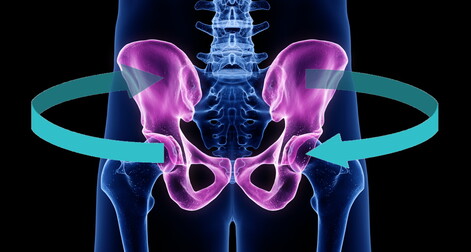Several practices that contribute to maintaining optimal spinal health also serve as methods to rehabilitate your spine. It's essential to engage in these activities under the guidance of a chiropractor, and this advice should not be solely relied upon for addressing your specific case.
While Round Ligament pain is often considered a common and typical pregnancy symptom, it signals tension in the area and an imbalance in the suspensory ligaments of the uterus. This type of pain can reach a severity that restricts activities like walking and exercise, causing significant discomfort when rolling over in bed or standing up. It may also be linked to other treatable pregnancy issues such as Symphysis Pubis Dysfunction, Low Back Pain, and Sciatica, indicating abnormal stress on the uterus. Some chiropractors observe that Round Ligament pain can serve as an early indicator of Symphysis Pubis Dysfunction.
Although some healthcare providers may suggest that Round Ligament pain is inevitable and cannot be alleviated, chiropractic care from a practitioner experienced in working with pregnant women can prove highly beneficial in managing Round Ligament Pain.
Before exploring the potential advantages of Chiropractic care, it is crucial to understand the anatomy of the lower back and the typical causes of pain in this area. The lower back, known as the lumbar spine, is a intricate structure comprising vertebrae, intervertebral discs, muscles, ligaments, and nerves. Disruption or injury to any of these components can result in low back pain.
Common causes of low back pain include:
Several key elements of Chiropractic care contribute to its efficacy in addressing low back pain:
The pelvic region contains numerous nerves and muscles interconnecting and influencing each other based on the specific problem. Pelvic discomfort is commonly felt in areas such as the lower back's base, the Sacroiliac joints (SIJ), or the sides of the gluteus maximus muscles. Anterior pelvic tilts happen when the pelvis shifts forward towards the pubis, causing the Sacroiliac joints (SIJs) to rise. This can create a sensation of an exaggerated curvature in the lower back, potentially leading to discomfort or even pain. Posterior pelvic tilts happen when the pelvis tilts backward, causing the Sacroiliac joints (SIJs) to lower and lifting the pubis. This experience may present as stiffness and a decrease in the natural lumbar curve, possibly leading to heightened pressure on the intervertebral discs and contributing to degeneration over time. Lateral pelvic tilt results in alterations to perceived "leg length" and can be induced by lumbar spine scoliosis, leading to imbalances between both sides of the body. This imbalance may result in one side experiencing more pain and disparities in muscle tone between the two sides. Pelvic instability can stem from various sources, including trauma such as pubic symphysis dislocation during childbirth or changes in the sacroiliac joints. Symptoms of an anterior pelvic tilt encompass low back pain, a sensation of tightness in the lower back, thighs, or hamstrings, and a perceived weakness in the gluteus and core muscles. Pelvic pain symptoms include low back pain, neck or upper back pain, shooting pains down the leg, buttock pain, soreness in the gluteus maximus, soreness in the legs, lack of strength in the low back and core muscles, changes to posture, sore joints (hip pain, knee pain). Chiropractic care proves beneficial for addressing pelvic concerns, employing joint mobilisation and muscle relaxation to influence overall biomechanics positively. Simple spinal adjustments, involving the application of force by the chiropractor to move joints back to their "regular" state, can alleviate pelvic pain resulting from tilting or rotation. Low force techniques, like drop pieces or pelvic blocks, are also utilised to encourage the pelvis to assume a more comfortable position, thus reducing pain.
Outlined below are a handful of health issues and hurdles that may arise from these bodily changes.
Chiropractic care presents a holistic approach to addressing age-related concerns and contributes to overall well-being as you navigate through the natural aging processes of your body. It offers pain relief without resorting to prescription medications or invasive procedures, facilitates restful sleep by alleviating muscle tension, inducing body relaxation, and minimizing stress. Furthermore, it reinstates optimal function to the body's nervous system, thereby enhancing your overall health and wellness. Additionally, chiropractic treatments play a crucial role in enhancing joint health and promoting mobility, which becomes increasingly significant in the later stages of life. Improved joint health translates to better mobility, and enhanced mobility translates to an elevated quality of life. Moving without discomfort enables individuals to maintain an active lifestyle, a factor that contributes significantly to improving cardiovascular health, reducing the risk of future degeneration such as arthritis, preventing falls and accidents, strengthening balance and coordination, supporting mental health, and fostering a greater sense of independence. By incorporating regular chiropractic care into your routine, you can anticipate healthier, more joyful, and more balanced days ahead in your life. Schedule a convenient consultation with The Joint Chiropractic today to embark on this journey towards improved well-being. |
|
Shop 2 Meadowlands Shopping Plaza,
112 Whitford Road, Somerville, Auckland 2014 info@nandishchiropractic.com |





